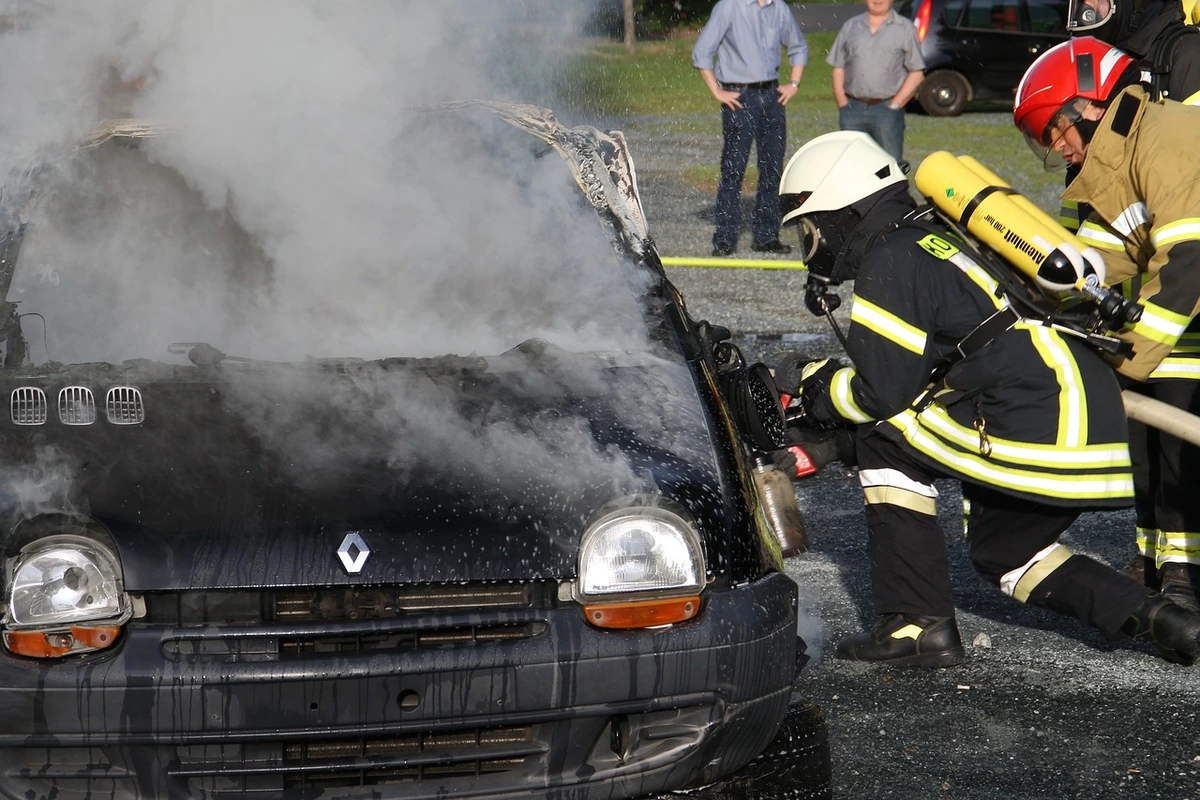How Firefighters Are Exposed to PFAS Chemicals While Battling Flames
In the line of duty, firefighters are hailed as heroes, bravely combating infernos to protect lives and property. Yet, amidst the chaos and courage lurks an invisible threat: per- and polyfluoroalkyl substances (PFAS). These chemicals, ubiquitous in firefighting foams and gear, pose a silent but severe risk to the health of firemen.
In this article, we delve into the alarming reality of how firefighters are unwittingly exposed to PFAS chemicals while battling blazes.
Understanding PFAS The Persistent Adversary
According to the Food and & Drug Administration, PFAS compounds resist grease, oil, water, and heat. They were originally utilized in the 1940s and are today found in hundreds of items. Their unique properties, including their resistance to heat, water, and oil, render them indispensable in various industrial and consumer applications.
PFAS have permeated countless facets of modern life, from non-stick cookware to waterproof clothing. The FDA has also permitted the restricted use of some PFAS in cookware, food packaging, and food processing equipment.
However, in firefighting, PFAS emerges as a double-edged sword. Firefighting foams, particularly aqueous film-forming foams (AFFF), have traditionally depended on PFAS to successfully suppress flammable liquid flames. These foams form a thin coating on the fuel surface, smothering the fire and preventing it from re-igniting. While undeniably effective, the dark side of AFFF lies in its PFAS content, which firefighters can be exposed to.
The Battle Unfolds Firefighters on the Frontline
When the alarm sounds, firefighters rush to the scene, prepared to confront the blaze head-on. Clad in protective gear, they navigate the smoke-filled battlegrounds with unwavering resolve. Yet, as flames rage and temperatures soar, the protective barrier between firefighters and PFAS erodes.
Firefighter turnout gear, essential for shielding against heat and flames, often incorporates PFAS-based water repellents to enhance durability and waterproofing. Over time, these coatings degrade, releasing PFAS particles into the air and onto the skin of unsuspecting firefighters.
A recent National Institute of Standards and Technology study found that wear and tear on this gear can release more PFAS chemicals. The study found at least 20 different types of PFAS chemicals in the gear.
Additionally, extinguishing fires with AFFF-laden water further exacerbates the risk of PFAS exposure, as aerosolized droplets permeate the firefighting environment. AFFF poses the most significant risks, so many victims have even filed lawsuits. According to TruLaw, those who were diagnosed with a health condition after being exposed to AFFF have filed cases against manufacturers.
The core of these lawsuits is that AFFF exposure has caused health conditions like cancers, reproductive problems, developmental issues in offspring, etc. If you face such problems after exposure, you can also file an AFFF lawsuit. If you and your lawyer can gather enough evidence to prove liability, you would be entitled to compensation. The AFFF lawsuit settlement amount you receive may vary based on factors like the severity, lost wages, medical expenses, etc.
The Toll on Health Unveiling the Hidden Consequences
The insidious nature of PFAS extends beyond the immediacy of the firefighting scene, exacting a toll on the long-term health of firefighters. Mounting evidence suggests a link between PFAS exposure and a myriad of adverse health outcomes, ranging from cancer to immune system dysfunction.
Perfluorooctanoic acid (PFOA) and perfluorooctanesulfonic acid (PFOS), two notable PFAS chemicals, have received special attention due to their danger to humans. The International Agency for Research on Cancer (IARC) found that PFOA is carcinogenic based on sufficient evidence. On the other hand, PFOS is possibly carcinogenic. These compounds can accumulate in bodily tissues over time, posing a continuous and long-term threat to firefighter health.
Furthermore, the occupational hazards faced by firefighters, including smoke inhalation and dermal exposure, synergistically amplify the adverse effects of PFAS. The combination of firefighting-induced stressors and PFAS exposure creates a perfect storm of health risks. This highlights the critical need for comprehensive efforts to reduce firefighter exposure to these toxic compounds.
Strategies for Mitigation and Awareness
AFFF is one of the biggest sources of PFAS chemicals and the reason why firefighters are exposed to them. An ACS Publications study notes that AFFF discharge sites should also be considered as presumptively contaminated. This shows how widespread PFAS contamination due to AFFF has been over the years.
Addressing the pervasive threat of PFAS requires a multifaceted approach encompassing mitigation strategies and enhanced awareness within the firefighting community. At the forefront of this quest is the need to use PFAS-free firefighting foams and gear. This reduces the reliance on hazardous chemicals without compromising fire suppression efficacy.
Moreover, stringent protocols for decontaminating and maintaining firefighting gear are paramount to minimize PFAS exposure among firefighters. Regular cleaning and inspection of turnout gear and the implementation of dedicated decontamination procedures can serve as crucial safeguards.
In parallel, raising awareness about the risks associated with PFAS exposure is essential to empower firefighters with the knowledge to protect themselves. Educational initiatives and comprehensive training programs can equip firefighters with the tools and resources to identify and mitigate PFAS exposure risks.
Furthermore, advocating for legislative measures to regulate PFAS use and facilitate the cleanup of contaminated firefighting sites is imperative. By harnessing the collective strength of advocacy groups, policymakers, and stakeholders, meaningful progress can be achieved in mitigating PFAS threats.
Frequently Asked Questions
How do harmful PFAS chemicals spread across the environment?
These chemicals can enter the environment via industrial waste, consumer items, and firefighting foams. Once discharged, PFAS may remain in soil and water for extended periods, frequently spreading through groundwater and surface water systems. Water currents may transport them vast distances, contaminating water supplies on a large scale.
What happens when PFAS are burned?
When PFAS are burnt, they do not disintegrate quickly because of their strong carbon-fluorine bonds, among the strongest in organic chemistry. Incomplete combustion can produce poisonous byproducts such as hydrogen fluoride and other fluorinated chemicals, which are damaging to health and the environment.
What is PFAS for firefighting?
PFAS are commonly employed in firefighting, especially in aqueous film-forming foams (AFFF). These foams effectively suppress flammable liquid fires by forming a barrier between the fuel and the air, which prevents flames from spreading. However, the usage of PFAS-based foams has resulted in severe environmental pollution.
To conclude, as firefighters continue to brave the flames in service to their communities, the specter of PFAS looms large. It harms the health and well-being of individuals who face struggles every day. Yet, amidst the challenges and uncertainties, a beacon of hope exists—a collective resolve to confront the insidious threat of PFAS.
By fostering collaboration, we can pave the way for a future where firefighters are no longer unwitting victims of PFAS exposure. Instead, they are the empowered defenders of their own health and the safety of themselves and their colleagues. Together, let us extinguish the flames of adversity and forge a path toward a safer, healthier tomorrow for firefighters and communities alike.







